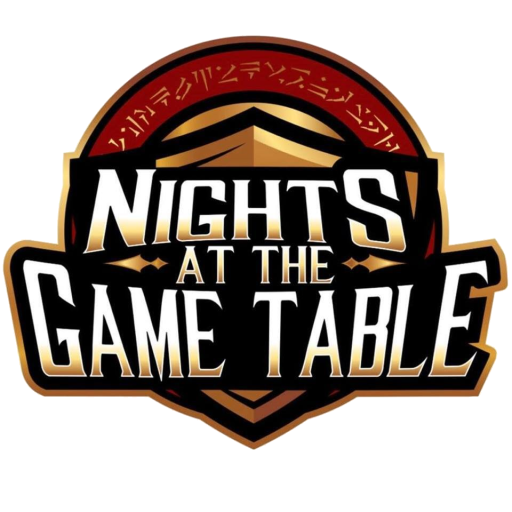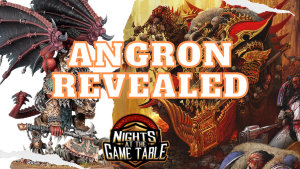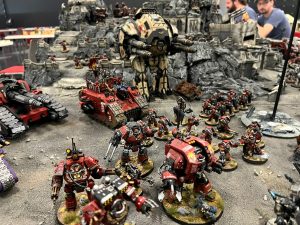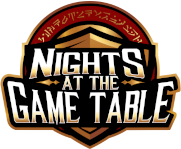Okay, so you’re standing across from someone and they just handed you their list. You could be at a friend’s house, the local game store or maybe you’re even at your first tournament. Either way, you’re staring at the list they handed you, trying to figure out how to win but you don’t know how to even start deploying. Forget tips and tricks, how do you even begin to evaluate their list and formulate a game plan against it? Well that’s where I come in. Let’s go through a few basic ways to evaluate an opponent’s list and formulate a plan of attack.
Your first step is both the easiest and earliest one. You have to know your list. Let me repeat that:
KNOW YOUR LIST!

There we go. Too often I’ve seen somebody radically switch their list last second before a tournament (or been that guy) only to find out what their army does partway through round two. It does not matter if your new list is much better than the old one if you don’t know how to play it or even what it’s really good at. You can’t evaluate your opponent’s lists without a clear comparison to what yours does. Small tweaks to an overall similar gameplan is fine, switching from Orks to Genestealer Cult is not okay.
SIZING THEM UP!

Second step is to figure out what your opponent’s list is capable of. If you already know what the list does and have played against similar lists before, you’re doing okay. If you haven’t, then get ready to ask a barrage of questions. Figure out which of his units are shooting or close combat and then how much damage they can do. How hard are his units to kill? Ask their toughness, wounds and save. Are there strategems to make them harder to kill? See how far his threats can move. Do they have any shenanigans? Common ones to ask for are teleports, redeploys, easy assaults out of deep strike, fighting with a unit twice, moving twice and shooting as you arrive from deep strike. You’re just absorbing information for later decision making. Leave no stone unturned, if you can’t remember if you’ve already asked a question, ask it again. You can usually work these questions into deployment without pausing the game for too long.
Step three is to evaluate where their army is stronger than yours and where they are weaker. This brings me to the concept of threats. This is the easy way to evaluate a list. What shooting units do they have that are threatening? Do they outrange yours? Can they stand and trade with your shooting units or can’t they? This is where mathhammer comes in. If they have a squad of dark reapers, does that kill your leman russ before you can fire back? What about if they’re guided? What if you’re in cover? Whip out a calculator if you have to. After a while, you’ll know these things off the top of your head or at least have figured out likely scenarios at home, before the tournament. Once you’ve identified who has the edge in shooting, move to close combat.
Identify which of your opponent’s units pose a real threat to you in close combat. What units can kill your close combat threats and which will bounce off? Do they have any combat units that aren’t going to die up close? Do you? Again, if you’re not sure, use mathhammer. How many threats do they have and how many do you have? Can you trade one of your threats for more than one of their threats? I’ll get into the idea of trading units in combat in a future article but the takeaway here is if you two were to slug it out in the middle of the board, who’d win?
Okay, now you’ve figured out what both armies can do and how they match up. Now it’s time to come up with a plan. If you’re the shooting army, set up your shooting units with a view to as much of the board as possible. Deploy your assault units so that they can push enemy units out of hiding spots. Screen your important units with expendable units. Never let a squad of bullgryn or a leman russ get charged when you could have put guardsmen in front. If you’re the assault army, my previous article “How Not to Get Shot – A Guide” outlines a general gameplan for the assault army to weather the storm and defeat an army that can outshoot you. If your army is worse at both, then your army better have some tricks up its sleeves or you’re in some trouble. Play very cagey, staying out of line of sight of your opponent’s shooting and try to draw out their combat threats so you can counterattack them. Above all, remember you win by having more points. If your army loses in a straight up fight, just focus in on what you need to do each turn to maximize your points gained and don’t worry about how your army looks at the end of the game. Whatever your army is good at, try to narrow down the matchup into dynamics that are easier to plan for. Avoid this unit, charge that unit, stay out of close combat, pressure them in shooting, etc. Hopefully this article gave you tools in matchups that are unfamiliar or complicated and can help you feel less intimidated in your first tournament or two. Thank you for reading and best of luck getting through the opening stages of a game and coming out on top.
If you loved this article, and can’t wait to get more awesome Nights At the Game Table Content, click here to join our Members Area!
As always, a big thanks to Games Workshop for the images used in this article.




